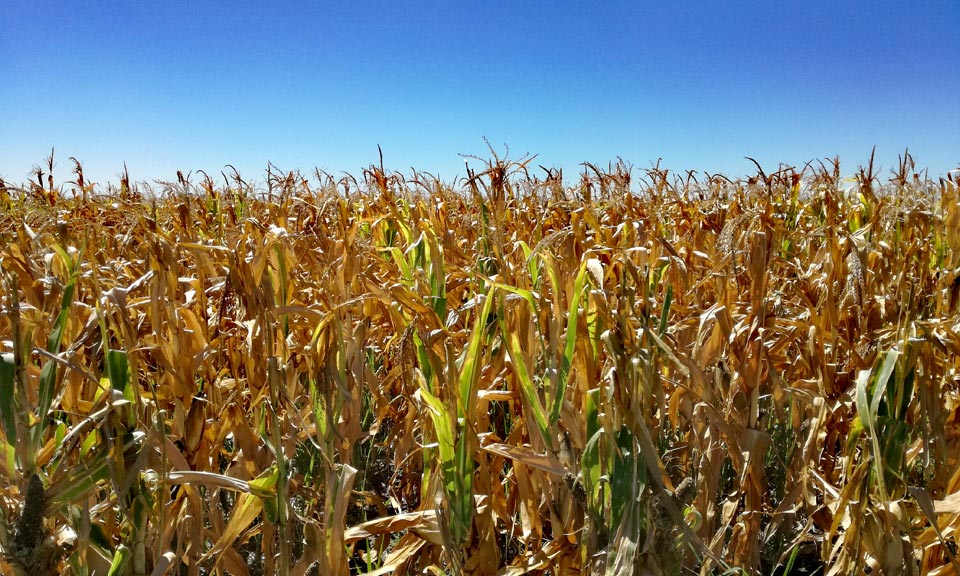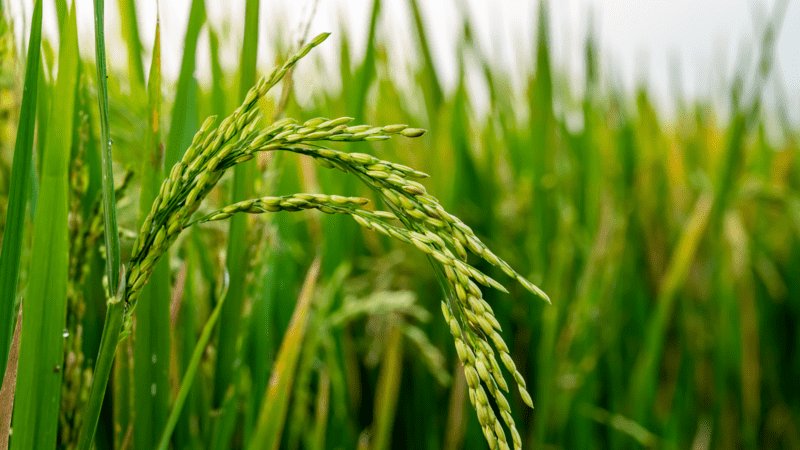AGRICULTURE WEATHER WATCH: No respite for Argentinian wheat despite rain forecast

Argentina is forecast to receive rain in key wheat-growing regions over Sept. 25-Oct. 1, but severe dryness and frost have already hammered the prospects of the current crop, potentially reducing availability to regular buyers in Africa and Asia.
No heavy rainfall was forecast in the current Sept. 18-24 week, although showers of varying intensity were forecast in some regions, Argentina's meteorological department said in an update.
Rains in the current week will improve moisture slightly for late wheat growth in Argentina, but much more was needed to end dryness, weather agency Maxar said.
The wheat crop in Argentina has already been severely impacted by dry weather in recent months and without more rain, the crop will be one of the worst in recent years. This could not come at more challenging time for global grain markets, which are already grappling with squeezed wheat supply due to the Russia-Ukraine war.
** 55% of soybean acreage was currently rated in good to excellent condition, three points below the same time a year earlier, according to the US Department of Agriculture.
** 52% of the nation's corn acreage was rated in good to excellent condition, 7 points below the same time last year.
** The weather forecast for the next 16-30 days remains slightly warmer than average across the central plains areas for corn and soybeans, while showers in the south-central Midwest are likely to slow down corn and soybean harvesting, according to Maxar.
** Platts-assessed FOB PNW corn rose 5.5% month on month to $350.30/mt Sept. 21, a 7-week high.
** 94% of the nation's spring wheat had been harvested as of Sept. 18, 6 points below the previous year, according to the USDA.
** Most of the wheat-growing regions of Western Australia and New South Wales have a lower than usual chance of showers over the next two weeks to Oct. 7, according to the Australian Bureau of Meteorology.
** The dry weather was expected to be good for the standing wheat crop, as it will help in drying the crop after the regions received heavy showers over the past few weeks.
** The likely lower-than-average chance of showers in Western Australia was increasing hopes of slightly higher-than-expected output of milling wheat output.
** Platts-assessed Australian Premium White or APW wheat rose $5/mt month on month to $370/mt Sept. 21.
** Most parts of France, especially the northern and western regions, were forecast to receive heavy showers over the next two weeks to Oct. 3, Mateo France said.
** The intensity of the rainfall may increase further over Sept. 25-Oct. 1, Mateo France added.
** The expected rainfall may provide some respite to the wheat and corn crops in France, a source at a key producer said.
** In Germany, light showers are forecast over western and southern parts until Sept. 27, according to the German weather service Deutscher Wetterdienst.
** Limited rainfall may improve wheat crop conditions in some areas, industry sources said.
** The EU's Monitoring Agricultural Resources agency has forecast wheat yields in marketing year 2022-23 (July-June) falling 1.4% year on year to 5.54 mt/hectare. For the EU's corn crop, yields for MY 2022-23 were seen 7.8% lower on year at 7.25 mt/hectare.
** Platts-assessed EU wheat with 11% protein content CPT Rouen rose 7.8% month on month to $345.25/mt Sept. 21.
** Brazil's first corn crop planting was expected to experience favorable weather conditions Sept. 20-26 as the forecast points to more rain in the southern regions where the sowing is concentrated.
** Widespread rains in the week to Sept. 23 will improve moisture supplies, which will favor corn germination but slow down wheat drying, Maxar said.
** Planting of the 2022-23 first corn crop had reached 22.1% of the forecast area in Center-South Brazil as of Sept. 15, private consultancy AgRural said in a note.
** Argentina's early corn crop planting has been delayed by drought, with barely 1% of the forecast area sown as of Sept. 15, compared with 25% a year ago, BCR said in a report.
** Planting of the early corn crop in Argentina typically begins in September, but the lack of sufficient rainfall has forced farmers to delay planting.
** Platts-assessed Brazil FOB corn rose 1% month on month to $293.49/mt Sept. 22, while Argentina FOB corn rose 1.4% over the same period to $278.94/mt.
This article is part of a global weather watch series from S&P Global Commodity Insights, which is published fortnightly.

News
India's wheat stocks in state-run inventories depleted to a 16-year low as the central government sold record quantities to augment domestic supplies and rein in rising prices amid poor crop yields during two previous seasons. Wheat stocks in government warehouses were at 7.5 million mt at the start of April, down from 8.4 million mt a year ago, an official at the Food Corporation of India told S&P Global Commodity Insights. Over the past decade, wheat stocks on April 1 averaged 16.7 million mt. Despite the sharp fall in stocks, the government was able to meet the buffer and strategic reserve norms that mandate holding wheat stocks at or above 7.46 million mt April 1. The government has planned to aggressively acquire wheat to replenish its stocks at state-run warehouses. The government plans to procure around 33.5 million mt wheat produced in marketing year 2024-25 (April-March), nearly 28% higher than the actual procurement of 26.2 million mt a year prior. India could not reach its wheat procurement target in MY 2022-23 and MY 2023-24, as heat waves weighed on the crop size. However, the pace of procurement has slowed over the past week as recent showers in key wheat producing states have delayed harvest operations, traders said. The government has pegged India's wheat output in crop year 2023-24 (July-June) at 112 million mt, slightly higher than the 110.55 million mt harvested in the previous season. However, an S&P Global Commodity Insights survey of 13 analysts and traders found India's wheat harvest in MY 2023-24 is likely slightly lower year on year, at 107 million-108 million mt. Recently, it has ordered mandatory declaration of wheat stocks available with traders, private warehouses, retailers and processors on a government-managed portal effective April 1 and every Friday thereafter, in a bid to ensure availability and prevent hoarding. Record sales The country has delved into state reserves to sell wheat to bulk consumers, as millers to try to curb domestic prices that have been above the state-fixed minimum buying price since the last crop was harvested. India has also provided repeated extensions to the scheme of distribution of free food grains to over 810 million beneficiaries under the Pradhan Mantri Garib Kalyan Anna Yojana for five years effective Jan. 1, 2024, has dampened the prospects for wheat and non-basmati rice exports in 2024. The move is aimed at ensuring food security to the beneficiaries, according to a government statement. The scheme, which was set to end this December, has been extended amid ongoing state assembly polls and upcoming general elections next year. However, if the government misses its procurement target, it may have to look for cheap imports or reduce import duty on the grain to ensure adequate domestic supplies. Despite the tight supply, it has been resisting calls to reduce or remove the 40% import duty on wheat. The government is also likely to extend export restrictions on wheat until March 2025. India banned wheat exports in May 2022, after domestic supplies tightened amid a drop in output. In marketing year 2022-23 (April-March), India planned to export nearly 10 million mt of wheat but ended up shipping nearly 5 million mt. Geopolitical tensions Benchmark grain, oilseed and vegetable oil futures rose overnight in the US and during morning trade in Asia April 19, reversing a bearish streak, after Israel launched a retaliatory missile attack on Iran, fueling fears of an escalating conflict in the Middle East. Any potential supply bottlenecks may spur a rise in export prices of wheat from Black Sea origin, traders said. The most active July soft red winter wheat contract on the Chicago Board of Trade rose 2.6% from the previous close to $5.675/bushel at 0320 GMT. As of 1640 GMT, the contract was trading at $5.62/bushel, up 1.67% from the previous close. In the EU, the Euronext milling wheat contract for May was up 0.4% from the previous close at Eur206.50/mt ($219.88) as of 1640 GMT. Platts, part of S&P Global Commodity Insights, assessed EU 11.5% wheat FOB CVB at $213.25/mt April 18, up $1/mt on the day.

News
Bayer AG has announced the pilot of an expert generative AI (GenAI) system that “quickly and accurately” answers questions related to agronomy, farm management and Bayer agricultural products. The pilot has been developed in collaboration with Microsoft as leading technology partner and Ernst & Young (EY) as an industry partner, the company said. The system is the result of Bayer using proprietary agronomic data to train a large language model (LLM) with years of internal data, insights from thousands of trials within its vast testing network and centuries of aggregated experience from Bayer agronomists around the world, the company said. “Our unique GenAI system has the potential to serve agronomists and benefit farmers all over the world, further advancing AI as an indispensable technology for agriculture,” said Amanda McClerren, CIO and head of digital transformation & information technology for Bayer’s crop science division. Bayer said it is exploring ways to integrate the expert GenAI system into its digital offerings, and the company anticipates broad opportunities for collaboration with other agricultural offerings and partners. “Bayer aims to expand the pilot of the expert GenAI system to selected agronomists and potentially farmers as early as this year, while continuing to advance a separate GenAI prototype allowing users to directly query their own farm data,” the company said. In addition, the partnership between Bayer and Microsoft enables the company to bring ready-made capabilities, AgPowered Services, to the agri-food industry, such as Bayer’s Historical Weather that brings a comprehensive weather dataset to Azure Data Manager for Agriculture that spans the last 40 years and provides detailed, field-level weather insights across global agricultural regions, the company said. Integrating tools from IBM, including from the IBM Environmental Intelligence Suite, the new capability, which was previously available for internal use only, can inform weather risk assessments and actuary processes, Bayer said. It will also be used by Bayer and others to forecast crop seasonality and production changes year over year, as well as train agronomic models, it said. Meanwhile, Bayer is developing a connector that enables access to irrigation data from Lindsay Corp., an industry-leading irrigation solution provider. This expands the data types available to Azure Data Manager's enterprise customers, making it possible for them to connect to irrigation data in the same way as weather, imagery, original equipment manufacturer (OEM) and other data types, the company said. The new cloud offerings will also support regulatory and sustainability reporting, such as providing supply chain traceability that can help ensure compliance with new laws such as the EU Deforestation Regulation, which is expected to go into effect at the end of 2024, Bayer said. This article was first published in chemweek.com. Photo credit: Bayer

News
Asia has seen the fastest growth in biofuels production and exports globally, driven by government policies and export markets for feedstocks. To capitalize on the boom, governments have rapidly pushed out biofuel mandates focused around their country’s main agricultural products. Presently, the largest biofuel producers in the region are China, India, Indonesia, Malaysia, the Philippines and Thailand. Here’s a ready reckoner for Asia’s major biofuel policies along with production, trade and prices. Click for the full-size infographic